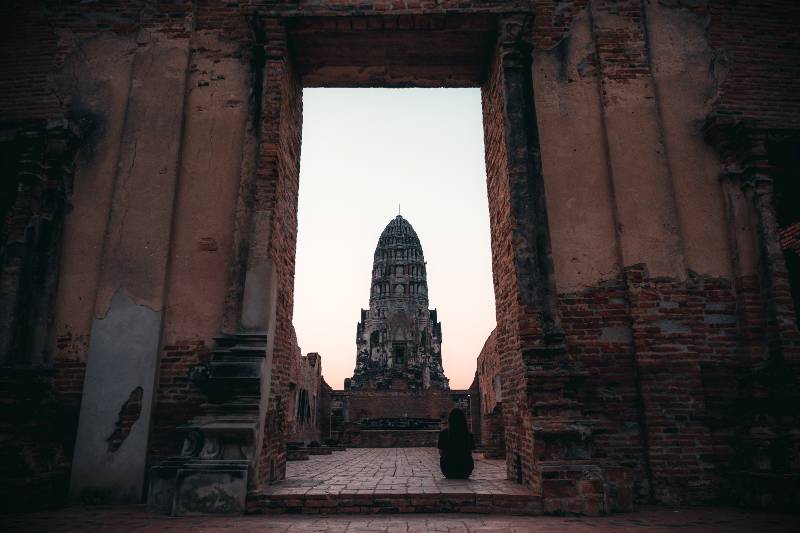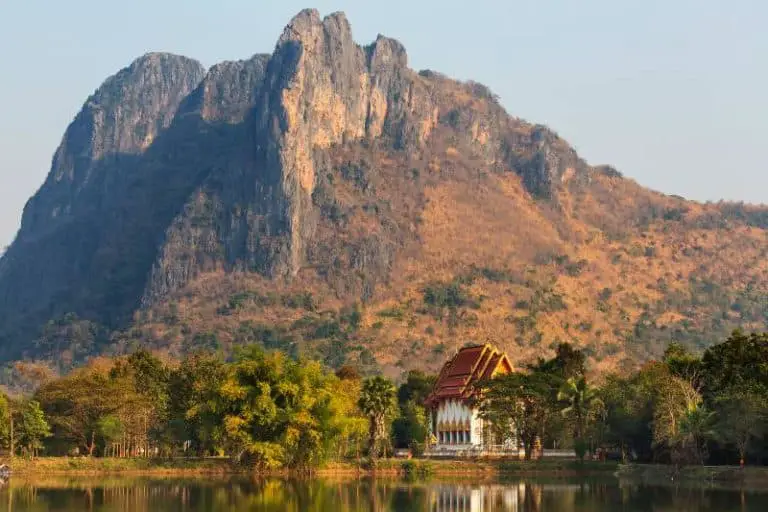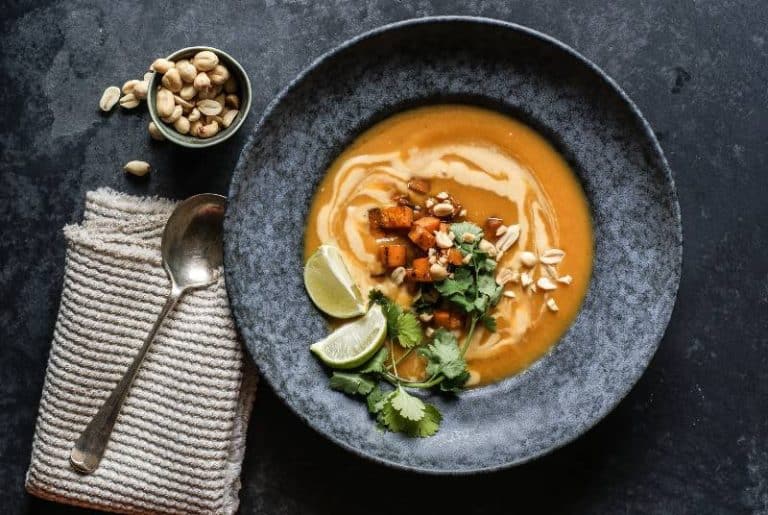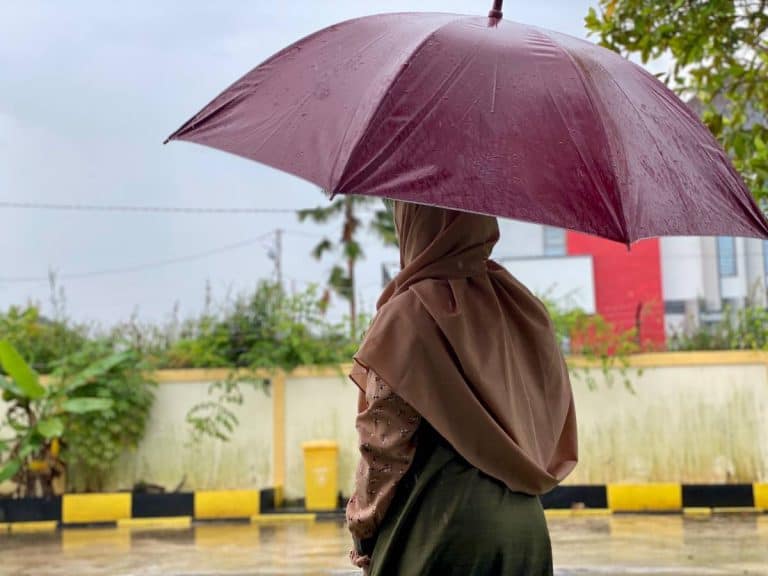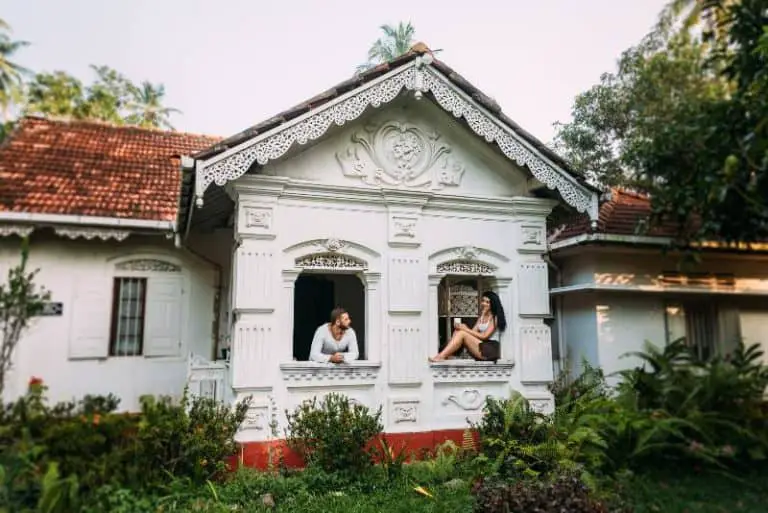Unveiling Thailand’s Secret Treasures: A Journey Off the Beaten Path
Have you ever wished to explore some of the world’s most exotic and intriguing destinations, without all of the tourist-filled crowds? Thailand is the perfect destination for you. A country filled with a myriad of the best-hidden gems waiting to be discovered, each one more gorgeous than the next; its crystal clear beaches, soaring misty mountains laced with lush vegetation, and vibrant jungles – they all make it an ideal spot for those looking to get off the beaten path.
But beyond that lies Thailand’s truly hidden gem: destinations so tucked away from tourists that many Thais don’t even know about them; cultural experiences like no other where you can join farmers in their fields or meet traditional healers in remote villages. Whether it be ancient stone temples, secret waterfalls, or simply local tea parties – there are countless ways for travelers to learn more about this stunning nation and immerse themselves in Thai culture. In this blog post, I will highlight some of these incredible secrets across Thailand!
There are many lesser-known destinations in Thailand that offer unique experiences beyond the typical tourist spots. Explore charming Pai and remote Mae Hong Son in the north, ancient Ayutthaya and Sukhothai in central Thailand, rich culture and Khmer temples in Isaan, unspoiled Trang beaches in the south, and lesser-known islands like Koh Kood in eastern Thailand. These diverse locations showcase the country’s true beauty and heritage, providing unforgettable adventures.
Key Takeaways
- Thailand is an exotic and intriguing destination with many Thailand hidden gems waiting to be discovered
- Beyond the beaches, mountains, and jungles lies a myriad of truly hidden gems in Thailand.
- From ancient stone temples to secret waterfalls and cultural experiences, travelers can learn more about Thai culture by immersing themselves in it.
Northern Thailand
Chiang Mai’s offbeat attractions
Get a Massage from a Prison Inmate
We understand your hesitation as the words “massage” and “prison” are not commonly associated. However, the Chiang Mai Women’s Correctional Institute is a government-operated rehabilitation program that instructs female inmates in a profitable skill – massage therapy.
Massage parlors are common in Chiang Mai, but this specific type of massage supports women who have completed their sentence to reintegrate into society.
Having the skills and experience to provide for themselves decreases their chances of being incarcerated again. Plus, you can enjoy a great massage in Chiang Mai, which has a lower incarceration rate. It’s a win-win situation!
You can get full body massages and foot massages for ฿200 an hour at Chiang Mai Women’s Correctional Institute. Reservations are not accepted, so it’s better to arrive early as it is first come, first served. Keep in mind that it’s possible for them to get fully booked quickly.
After a guard signs you up, you can visit the attached cafe to grab some food or drinks. Once you enter, you will notice the dim lighting and soft music, which will help you relax.
First, they will wash your feet, then they will lead you to the next room for your treatment. It’s not allowed to use phones or take photos, but you probably won’t even care because you’ll be so relaxed. It’s worth mentioning that Lila Thai Massage hires former inmates.
Pai’s natural beauty
If you’ve visited small towns like Big Sur or Carmel in California, Boulder in Colorado, or any artist-focused places, you can imagine what Pai is like. The town has numerous art galleries and meditation and yoga classes are popular. Additionally, the locals are open-minded and welcoming to people from various backgrounds.
You can take classes in a wide range of subjects, including martial arts and alternative healing. The residents of Pai are committed to their community and are actively involved in reforestation projects, as well as assisting underprivileged minority groups in the area.
Living in Pai as a foreigner allows you to experience a Southeast Asian small-town lifestyle without having to fully integrate into Thai culture. Fortunately, many locals in Pai have learned English and adjusted well to the influx of foreign tourists and residents, making it easy for English speakers to communicate.
In addition to its rural setting, Pai has other advantages as well. Living in a small mountain town offers peace and quiet and all the amenities one could need. Moreover, Pai is conveniently located within a four-hour drive to Chiang Mai, and there is a wealth of medical care, shopping, dining, and cultural opportunities available in the area.
Pai is a jewel in the center of one of the most attractive landscapes in to visit Thailand. Several waterfalls and natural hot springs are located just a few kilometers from town. There are some excellent caves, camping and trekking opportunities, and a few elephant camps just a short drive away.
Bicyclists can have a comfortable ride in the countryside, while motorcycle enthusiasts can have endless hours of fun exploring the rural and mountainous roads that lead out of town in all directions.
Mae Hong Son’s cultural charm
Mae Hong Son is a province located in the northwest of Chiang Mai and bordering Myanmar. The area is known for its mountains, forests, and outdoor activities, as well as it’s rural charm and laidback atmosphere. Additionally, the province is home to a diverse population with a rich culture.
You can visit Mae Hong Son at any time, but the best time is from November to January when it’s cooler. If you’re traveling from Chiang Mai, you can take a couple of days or longer to visit. You can choose to travel by daily flight or bus, but many people prefer renting a car or motorbike to tour the Mae Hong Son Loop.
The Mae Hong Son Loop is a 600-kilometer journey that begins and ends in Chiang Mai. You can choose to travel in either a clockwise or counter-clockwise direction. The journey usually takes three or four days to complete.
The route goes through beautiful rural areas, which include locations such as Mae Chaem situated on Doi Inthanon, Thailand’s tallest mountain, Mae Sariang by the river, Khun Yuam market town, and the well-liked Pai town.
Central Thailand
Kanchanaburi’s historic sites
Kanchanaburi is a town famous for several attractions such as the historic World War II Death Railway bridge on the River Kwai, museums, national parks, natural wonders, and historic buildings. The renowned bridge was featured in a well-known Hollywood movie.
The Death Railway Museum is located nearby and features the military history of the area. Additionally, the Kanchanaburi War Cemetery serves as a memorial for Burmese prisoners of war who perished during the construction of the railway.
The JEATH War Museum displays artifacts, exhibits, documents, photographs, and ephemera that recount the history of this region during World War II. If you’re looking for a broader history of the region, visit the Ban Kao National Museum, where you can learn about the area’s natural and regional history.
For family-friendly and cultural activities, the Erawan National Park offers cave exploration and waterfalls. ElephantsWorld allows you to get hands-on with these majestic beasts. Alpaca Hill is the first Alpaca breeding farm in Thailand.
You can visit the JJ Night Market in Kanchanaburi to browse through numerous vendor stalls where you can find souvenirs, gifts, as well as arts and crafts. Additionally, the Resort Water Park provides an extensive activity pool, water slides, and splash park entertainment suitable for everyone.
Lopburi’s ancient ruins
While watching Planet of the Apes, you may have thought that a town governed by monkeys would be civilized and tranquil. However, this is far from the truth. In Lopburi, the monkeys often fight with each other, mate on rooftops, and bother humans who have any kind of food.
Although monkeys are not technically classified as apes and Lopburi is not officially governed by monkeys, it may sometimes appear that way. The town boasts a number of ancient ruins, adding to its allure as one of Thailand’s most fascinating destinations.
In Lopburi, the monkeys have established their own territory centered around a 13th-century Khmer temple called Prang Sam Yot. While the temple itself is worth seeing, the monkeys also offer some entertainment. Visitors can purchase food from the temple vendors to feed the monkeys, but should only do so if they want to have close contact with them.
The monkeys will climb on you and take your food, or anything that sounds like food in a plastic wrapper. While some people may enjoy this experience, I decided to keep my distance after seeing how scruffy some of the monkeys appeared.
Sukhothai’s preserved history
Sukhothai is home to an impressive historical park that has been recognized by UNESCO as a World Heritage Site. It is one of the best-preserved UNESCO sites in Thailand. The park is where you will find most of the province’s historical artifacts, including partially restored 13th and 14th-century palaces and temples. It also showcases the Kingdom of Siam’s unique “Sukhothai Style” architecture, which is one of the few remaining legacies of the Sukhothai Kingdom.
To navigate the Sukhothai Historical Site effectively, understand that it is divided into five zones: North, Central, Western, Southern, and Eastern. There are multiple ways to explore each zone, so it’s easy to get disoriented.
Exploring Sukhothai on foot is the most affordable option, but keep in mind that the entire area is vast and it may not be possible to see everything. To fully experience the site and understand its history, it’s recommended to hire a knowledgeable local guide who can point out important locations and ensure that you don’t miss any notable spots.
Booking a tour for exploring Sukhothai Historical Park is highly recommended. You can ride a bicycle and visit the historical relics, archeological sites, and farms around the UNESCO Site. You can choose either a half-day trip or a full-day trip, depending on how much time you have in Sukhothai.
I recommend renting a bike to explore the area if you don’t want to spend money on a guide. You can find bike rental places at the entrance of the historical park or ask for advice from your hostel.
Northeastern Thailand (Isaan)
Phanom Rung Historical Park
If you’re interested in cultural tourism and ancient architecture, a must-visit destination is the Phanom Rung Historical Park, also known as Prasat Hin Phanom Rung, located in Buriram province in Northeast Thailand. This Khmer-style temple was built between the 10th and 13th centuries and is considered one of the most remarkable and noteworthy temples of its kind in Thailand.
To reach Phanom Rung Historical Park from Bangkok, take a bus directly to Nang Rong or Prakhon Chai from the Mochit Bus Terminal. The trip typically takes about 5 hours. Once you arrive at either the Nang Rong Bus Station or Prakhon Chai Transport Station, you can easily hire a local taxi or Tuk Tuk to take you to the historical park, which is just 30 minutes away.
Nong Khai’s mystic attractions
Nong Khai is a charming province in northeastern Thailand, situated along the Mekong River and bordering Laos. The region is known for its mystic attractions, religious sites, and unique cultural experiences. Some of the most popular mystic attractions in Nong Khai include:
- Sala Keoku (Wat Khaek): This sculpture park, created by the visionary artist and mystic Luang Pu Bunleua Sulilat, features a collection of massive, surreal concrete sculptures inspired by Buddhism, Hinduism, and local folklore. The park is a testament to the artist’s imagination and serves as a thought-provoking spiritual retreat for visitors.
- Phu Phra Bat Historical Park: This park features unique rock formations, caves, and prehistoric rock paintings that date back thousands of years. The area is steeped in legends and mystical stories, and the park is home to several ancient temples and shrines, including Wat Phu Phra Bat, which is built atop a sandstone outcrop.
- Wat Pho Chai: This important Buddhist temple in Nong Khai houses the revered Luang Pho Phra Sai, a highly venerated Buddha image with a mysterious history. The image is believed to possess supernatural powers, and many people visit the temple to pay their respects and seek blessings.
Khon Kaen’s blend of tradition and modernity
Khon Kaen is being positioned as the next cultural and financial capital of Thailand and is even being referred to as the “New Manhattan.” Visitors will have the opportunity to experience and immerse themselves in both traditional and modern cultures.
In addition, Isan food is highly popular among both locals and foreigners. Sticky rice and som tam (a spicy papaya salad with fermented fish sauce) are especially favored by many people.
Khon Kaen, located in Isan, offers visitors an authentic and delicious culinary experience. The province is also known for its popular tourist attractions like Bung Kaen Nakhon Lake, Phra Mahathat Kaen Nakhon stupa, Phu Wiang Dinosaur Museum, Ubonrat Dam, Khon Kaen Zoo, Sim Isan, Wat Chai Si, and Khon Kaen University. The Tourism Authority of Thailand aims to attract 5 million tourists to the area by 2017, which is possible given the province’s many attractions.
Southern Thailand
Trang’s unspoiled beaches
Trang is a province in southern Thailand known for its pristine beaches, crystal-clear waters, and lush tropical landscapes. Located along the Andaman Sea, Trang’s coastline features numerous unspoiled beaches and islands that are perfect for relaxation and exploration. Some of the most beautiful beaches and islands in Trang include:
- Hat Chao Mai National Park: The national park situated along the coast boasts a variety of pristine beaches such as Pak Meng Beach, Chang Lang Beach, and San Beach. Additionally, the park encompasses a few islands like Koh Kradan and Koh Mook that provide breathtaking beaches and chances to go snorkeling.
- Koh Kradan: Koh Kradan is a stunning island in Trang, renowned for its turquoise waters and powdery white-sand beaches. Ao Phra Nang, also called Paradise Beach, is the island’s most popular beach and is a great place for swimming and sunbathing. With its lively coral reefs, Koh Kradan is also an ideal location for snorkeling and diving.
- Koh Mook: Koh Mook is renowned for its impressive scenery and the breathtaking Emerald Cave (Tham Morakot). This cave can only be reached by swimming or kayaking through a narrow tunnel. Once you’re inside, you’ll find a hidden lagoon with a secluded white-sand beach surrounded by towering limestone cliffs. You can also enjoy the peaceful atmosphere and beautiful beaches like Farang Beach and Charlie Beach on Koh Mook.
Khao Sok National Park
One of the must-visit places in southern Thailand is Khao Sok National Park, a magnificent natural reserve situated in Surat Thani province. With an area of around 739 square kilometers, the park offers a diverse range of flora and fauna, pristine rainforests dating back centuries, stunning cliffs made of limestone, and the awe-inspiring Cheow Lan Lake. For those who love nature, wildlife, and adventure, Khao Sok National Park is an ideal destination. Some of the primary activities and highlights you’ll find in the park include:
Cheow Lan Lake: The centerpiece of Khao Sok National Park is a beautiful man-made lake, also known as Rajjaprabha Dam Reservoir. This stunning lake is surrounded by towering limestone cliffs and lush rainforests, creating a serene and picturesque atmosphere. To explore the lake, visitors can take a short boat ride, kayak trips, or stay at floating bungalows.
Wildlife Watching: There is a diverse range of plants and animals in Khao Sok, such as over 300 types of birds, elephants, tigers, gibbons, and different reptiles. To see these captivating creatures in their natural environment, you can take part in guided jungle treks or nighttime wildlife-spotting tours.
Hiking and Trekking: The park has a variety of hiking trails for visitors to explore the rainforest, waterfalls, and wildlife. These trails differ in length and difficulty. Some of the well-known ones are Wing Hin Loop Trail, Bang Hua Rat Trail, and the trek to Sip Et Chan Waterfall. Hiring a local guide with experience is advisable to ensure safety and learn more about the park’s ecology.
Koh Lanta’s laid-back vibe
Koh Lanta is a serene island located in South Thailand. It’s blessed with stunning beaches and a tranquil ambiance, however it still remains unexplored to an extent. In the past, the island was mainly popular among backpackers, but nowadays all kinds of tourists can be found here. It’s especially popular among Swedish tourists, who often come with their families.
The population of Lanta is mostly comprised of Muslim descendants of Malaysian fishermen who migrated there about a century ago. As a result, pork-based noodles are not common, and you can expect to hear the call to prayer from mosques five times a day. However, you need not be concerned about strict religious laws, as the community is free from fundamentalism and generally coexists peacefully with foreigners, parties, and bars.
Koh Lanta stands out for its unique blend of Muslim hospitality, Thai kindness, and the idyllic ambiance commonly found in South East Asia. Moreover, Lanta’s vibrant culture owes itself to the influx of various immigrants, including the Chinese and sea gypsies.
Koh Lanta offers a lot of unexplored places and deserted beaches due to being less touristy. During our visit, we fell in love with the area and intended to stay for a few days but ended up extending it to one month. If you prefer discovering unknown places, interacting with locals, and enjoying delicious food, along with fair prices and rustic surroundings, then Koh Lanta should be included in your travel guide.
Eastern Thailand
Koh Mak’s peaceful retreat
Koh Mak (also known as Koh Maak in some guides) is a Thai island located in the Marine National Park in the east of the country. It is situated around 40km from the Trat coast and is 20km south of Koh Chang. The island covers approximately 16km², making it too large to explore by foot, but easily accessible by bicycle. Due to the absence of a vehicle ferry, the roads on the island are very quiet. Additionally, Koh Mak is not often frequented by package tours and remains a lesser-known destination for most travelers.
Every year, Koh Chang experiences an increase in shophouses, bars, restaurants, and nightclubs, resulting in significant development. Meanwhile, Koh Mak also shows growth, but at a much slower rate with limited development in the form of small restaurants, minimarts, and a few resorts.
Chanthaburi’s lush landscapes
Located on the banks of the Chanthaburi River, Chanthaburi is a calm town in eastern Thailand that serves as the capital of its province. Known for its beautiful countryside culture, rich history, and charming atmosphere, the area surrounding the town boasts stunning waterfalls, forests, and rolling hills. Chanthaburi has been influenced by diverse cultures since 1893.
You can see a mix of Thai, Vietnamese, Mon, Chinese, Burmese, Khmer, and French influences in the local culture and architecture of this city. Additionally, there is a cathedral and several Thai-Chinese temples located here.
Chanthaburi’s cuisine is an example of the city’s cultural reflection. Its inexpensive seafood is recognized as some of the best in Thailand. Furthermore, tropical fruits, particularly Durian, are considered a specialty of Chanthaburi.
The Chanthaburi region’s precious stone and gem trade is a major draw for tourists. The surrounding province boasts beautiful green hills covered in forests as well as stunning waterfalls that offer visitors a chance to enjoy nature after exploring the city’s rich culture and history.
Prasat Preah Vihear border Temple
The Temple of Preah Vihear is devoted to Shiva and is located on the edge of a plateau that overlooks the plain of Cambodia. It consists of a number of sanctuaries that are connected by pavements and stairs that span an 800-meter-long axis. The temple dates back to the first half of the 11th century AD, but its origins can be traced back to the 9th century when a hermitage was established.
Due to its remote location, this site is very well preserved. The architecture is exceptional and suited to the natural surroundings and religious purpose of the temple. Additionally, the carved stone ornamentation is of exceptional quality.
If you want to live in Thailand but don know where to make sure to check out this article I wrote where I discuss the best places to live in Thailand.
Exploring Thailand’s Hidden Gems FAQs
What are the hidden gems in Northern Thailand?
Discover the hidden treasures of Northern Thailand! Explore lesser-known destinations for a unique experience. Discover the charming Pai with its laid-back atmosphere and picturesque countryside. Visit the ancient city of Lampang, boasting Lanna architecture and horse-drawn carriages. Don’t miss the remote Mae Hong Son, which offers a blend of Thai and Burmese cultures, stunning temples, and the iconic Long Neck Karen villages. These destinations showcase Thailand’s diverse beauty and rich heritage, far from the typical tourist trail.
Are there any historical sites in Central Thailand?
There are many historical sites in Central Thailand that display the region’s rich heritage. Among these, Ayutthaya stands out due to its impressive ruins–it was formerly the capital of the Siamese Kingdom. Another noteworthy site is Sukhothai, which houses well-preserved temples and monuments from another ancient period of Thai history. Last but not least is Lopburi, a city with ancient Khmer and Ayutthaya-era temples. Visiting these sites will give you a deeper understanding of Thailand’s past civilizations and architectural wonders.
What can I expect to find in Northeastern Thailand (Isaan)?
Isaan, located in Northeastern Thailand, provides tourists with a distinctive experience of traditional thai village and culture, natural beauty, and unique cuisine. You can explore ancient Khmer temples like Phanom Rung and Phimai, lively local markets, and peaceful Mekong River views. Isaan is famous for its friendly hospitality and offers a genuine, less-traveled path for experiencing Thailand that enables visitors to immerse themselves in regional history and rural allure.
Where can I find unspoiled beaches in Southern Thailand?
The beaches in Southern Thailand are beautiful and peaceful, without many people around. Trang province has some especially pristine islands, including Koh Kradan and Koh Mook, with incredibly clear water and gorgeous beaches. There are also lesser-known islands in the Andaman Sea like Koh Bulon Lae and Koh Lao Liang that offer an amazing tropical vacation experience.
Are there any lesser-known islands in Eastern Thailand?
If you’re looking to avoid crowds, you should check out the less popular islands in Eastern Thailand. Koh Samet is a great option for relaxation, featuring lovely white-sand beaches and clear waters. For even more tranquility and nature, Koh Kood and Koh Mak are located further away from the tourist areas and offer pristine beaches and lush jungles.
Conclusion
Exploring Thailand’s Hidden Gems was a joyous experience and it’s exciting to dream of all the future possibilities for further exploration. Taking time to enjoy activities in nature, appreciating cultural customs, and exploring hidden gems is an incredible way to learn more about Thailand – and if done responsibly, can have amazing outcomes for the local economy. We encourage any travelers to discover and explore some of these hidden gems, as each one offers its own unique story that could open up a new chapter in your life.
While traveling responsibly is essential it’s also just as important that you take some personal risks, push your boundaries and jump headlong into all that Thai culture has to offer – so sign up for our newsletter today to keep up with the tips, tricks, and stories on living here!
Let go of your inhibitions and venture off the beaten path when exploring Thailand’s hidden gems – you may never look at life quite the same ever again.
